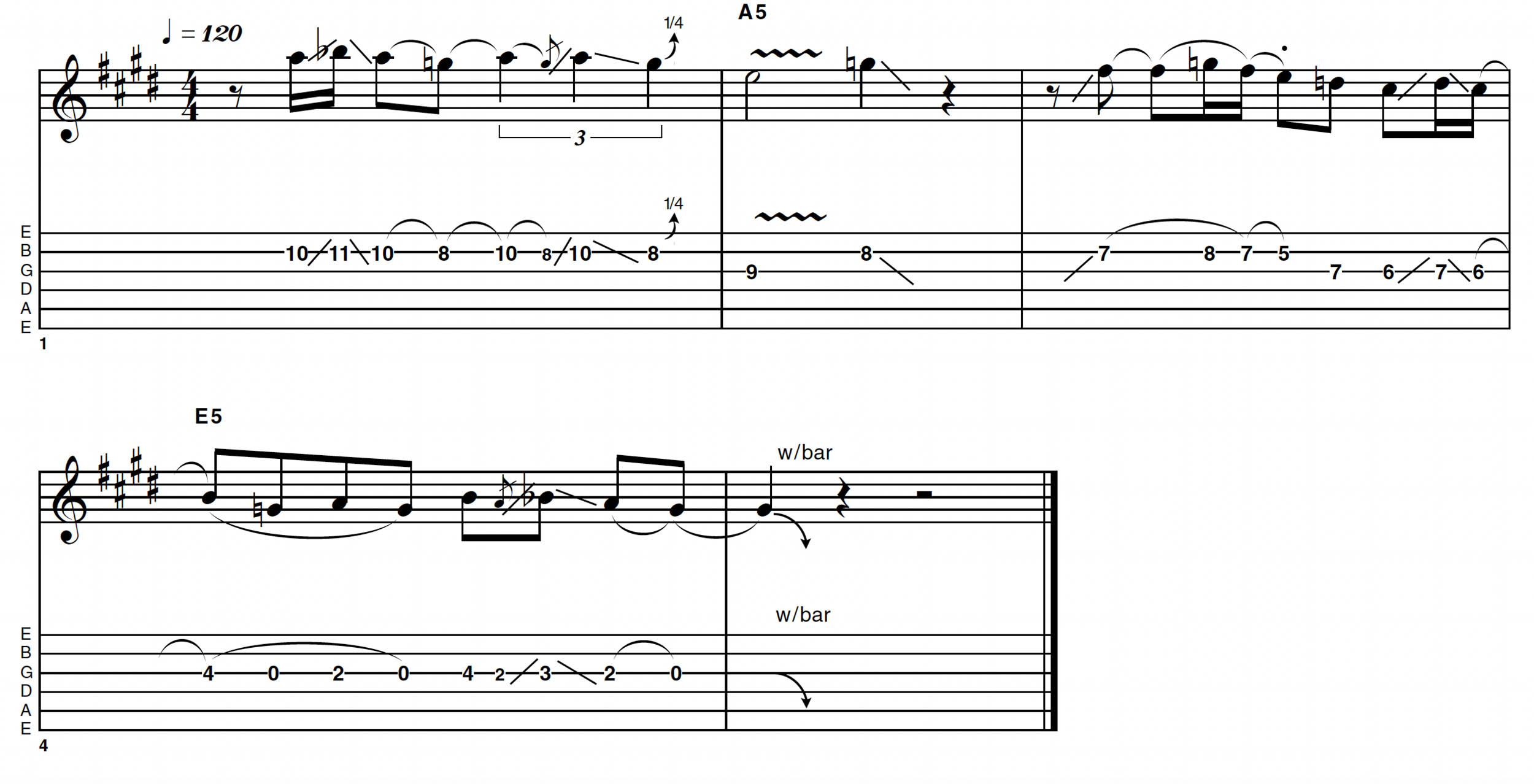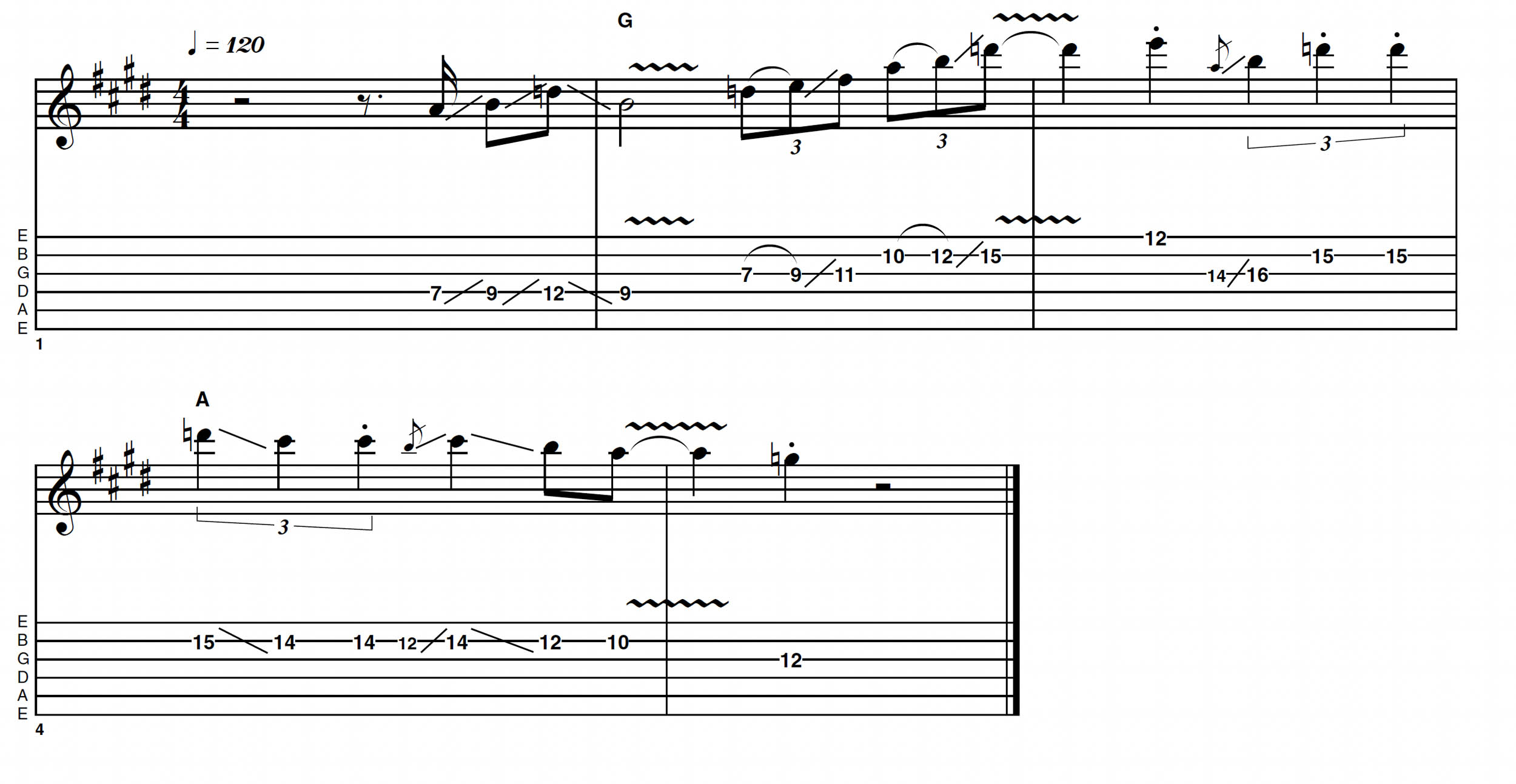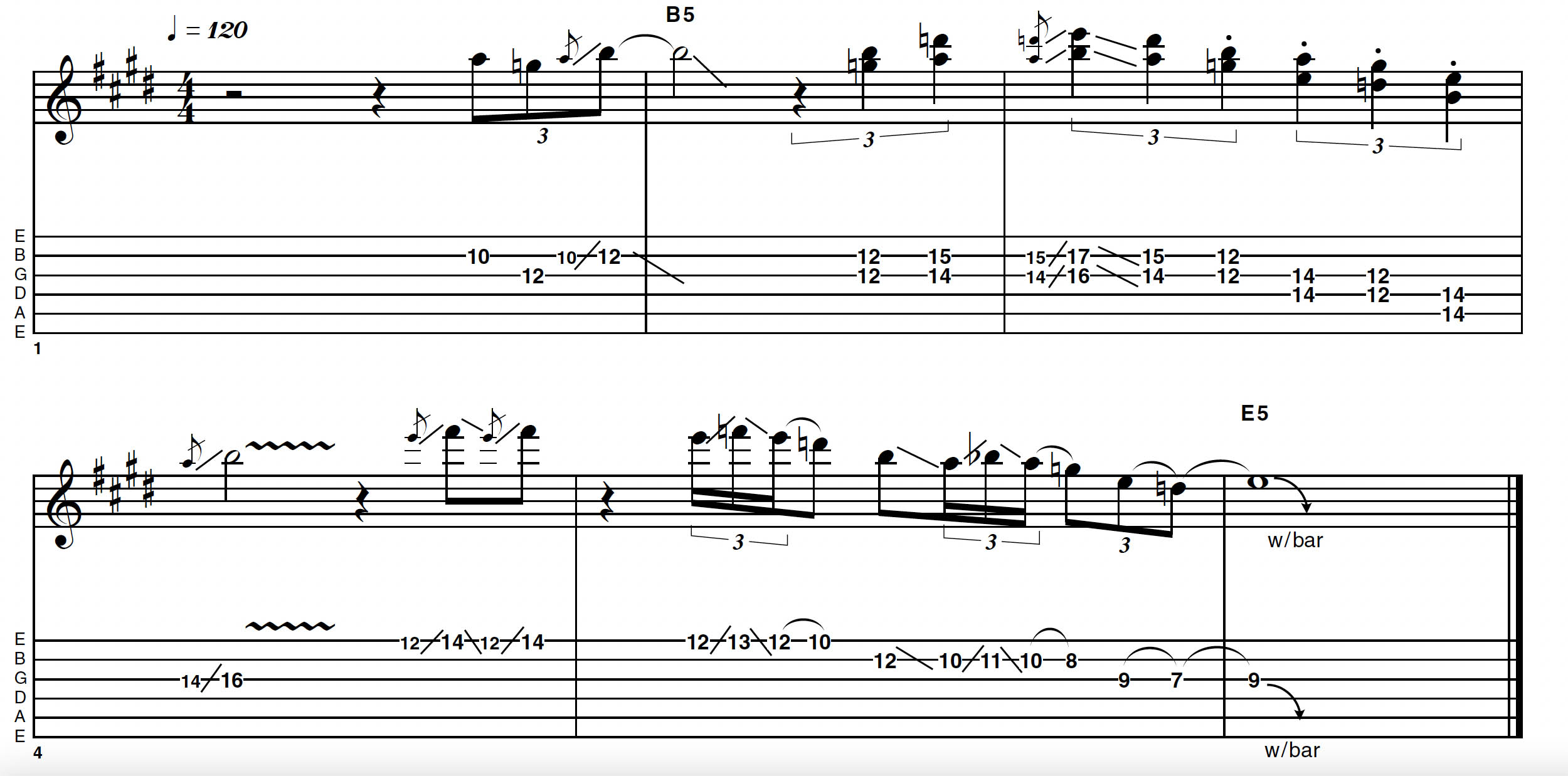How to break out of the pentatonic box with your solos
Let linear patterns unlock the fretboard and take you out of your comfort zone

It would be misleading to deny how useful the five pentatonic shapes are when mentally mapping out the fretboard. However, as with any shape or scale, there is a risk of feeling ‘boxed’ into a safe zone, both in terms of melody and the physical patterns we come to habitually play.
When we’ve played the same licks to the point of overfamiliarity (even though they most likely still sound great to others), it can be a good idea to take back the initiative and break some habits.
There are various ways we can approach this: adding in chord tones, extra notes from the major or minor scales, or referencing the CAGED chord/arpeggios that lurk within the pentatonic boxes.
The option I’m predominantly taking in this solo is replacing the pentatonic ‘box’ approach with lots of linear movement up and down the fretboard, facilitated by long and short slides. To be clear, the solo does actually not deviate much from the pentatonic at all in terms of note content – it just uses more linear patterns along the strings.
This ‘horizontal’ approach leads you to think of phrasing and technique in a very different way. There are still some string bends, but with the legato feel coming from the slides, I felt less compelled to rely on bends as automatically as I would playing within the more constricted pentatonic ‘box’ shapes.
Though I’ve made occasional use of the whammy bar, this isn’t essential. I’ve gone with a hybrid approach on the picking hand, using fingers more often than a pick, but the reason for this is more to do with stepping outside my own personal habits than any necessity – though it is certainly handy for playing the doublestop phrases clearly. Hope you enjoy and see you next time!
Example 1

Starting with a fairly conventional blues lick, most of the melodic/pentatonic content is happening on the second string.
It’s pretty easy to spot shapes 1 and 2 of the E minor pentatonic here, but the shapes become less obvious in bar 2 where some more overt sliding action happens.
We shift rapidly between shapes 1, 2, 3 then 4 where the final bend occurs. Definitely ‘outside the box’ in terms of phrasing, but they are still a useful reference.
Example 2

Slightly more static here but still avoiding conventional ‘shape’-based playing overall. This is enhanced by using slides to achieve a legato effect instead of string bends.
I’m making use of the third string to play a descending line at the end of the phrase, bringing the whammy bar into play for a not particularly subtle dive when I reach the lowest-/open-string note.
On a fixed-bridge guitar, I would probably put some other kind of slide (up or down) here to finish off the phrase.
Example 3

I’m clearly warming to the subject here, using slides up and down the fourth, then up the third and second strings to construct a line leading to the higher register, before lingering on the second string for a more melodic end to the phrase.
This mirrors what I might have gone for by using a string bend in more conventional playing, but, as you can see, the same notes can be delivered very differently!
Example 4

This final phrase brings in some doublestops, which amount to playing two notes of the pentatonic scale at once.
Again, string bends are avoided as they can make changing positions quickly more difficult – and, as I said earlier, the slides take a bigger role in creating a slinky, legato feel here. This kind of horizontal approach to scales and/or shapes is often employed by jazz players, who generally use heavier, less compliant strings!
Hear it here
Eric Johnson– Venus Isle
Eric has always managed to put his own unique stamp on the pentatonic by using slides and unusual groupings of notes.
This album is full of stunning playing, though the most obvious example is When The Sun Meets The Sky, which features a number of beautifully melodic linear solos.
Elsewhere, be sure to check out the outro of All About You. And for a deep dive into just how far Eric can take this approach, also have a listen to Camel’s Night Out.
Buck & Evans – Write a Better Day
A rising star in the guitar world, Chris Buck creates characterful bluesy parts and solos without ever seeming to be ‘stuck’ in a pentatonic box.
His contributions to Common Ground, Ain’t No Moonlight and Going Home are all clear examples of what can be achieved by taking a linear approach along the strings. Still plenty of soulful bends, but these are another tool in the box rather than the default when creating smooth legato phrases.
Wes Montgomery & Wynton Kelly Trio – Smokin’ At The Half Note
As well as catering to the atmosphere of a jazz club in the mid-60s, this album showcases Wes Montgomery’s unusual style, blending linear phrases – often using octaves – with amazing bursts of fluency.
Note how he creates a legato feel without a single string-bend on tracks No Blues, What’s New and The Surrey With The Fringe On Top. A stylistic shift from the other two albums I’ve cited, but many techniques in common!
Get The Pick Newsletter
All the latest guitar news, interviews, lessons, reviews, deals and more, direct to your inbox!
As well as a longtime contributor to Guitarist and Guitar Techniques, Richard is Tony Hadley’s longstanding guitarist, and has worked with everyone from Roger Daltrey to Ronan Keating.
“There are so many sounds to be discovered when you get away from using a pick”: Jared James Nichols shows you how to add “snap, crackle and pop” to your playing with banjo rolls and string snaps
Don't let chord inversions bamboozle you. It's simply the case of shuffling the notes around








![Joe Bonamassa [left] wears a deep blue suit and polka-dotted shirt and plays his green refin Strat; the late Irish blues legend Rory Gallagher [right] screams and inflicts some punishment on his heavily worn number one Stratocaster.](https://cdn.mos.cms.futurecdn.net/cw28h7UBcTVfTLs7p7eiLe.jpg)


